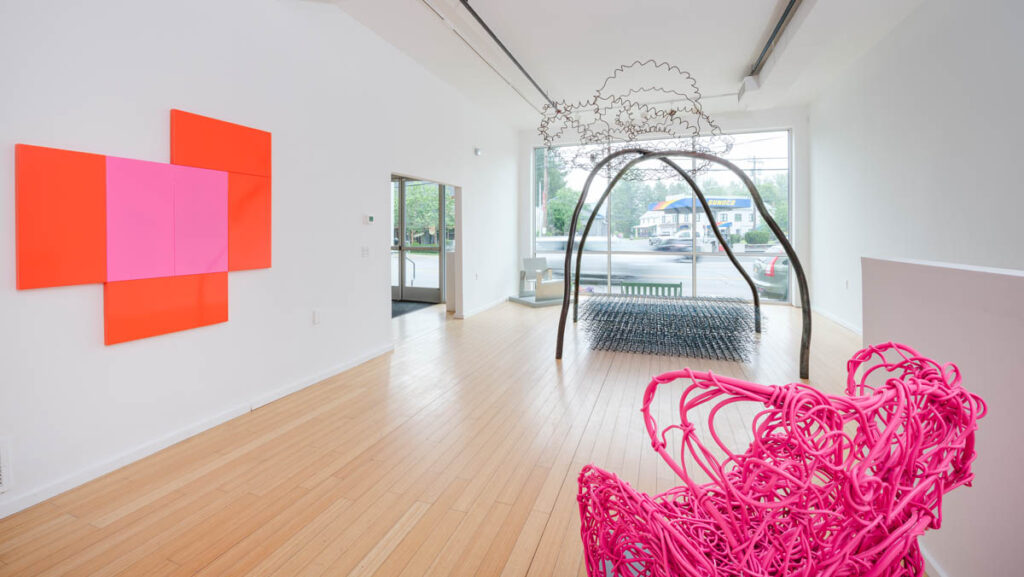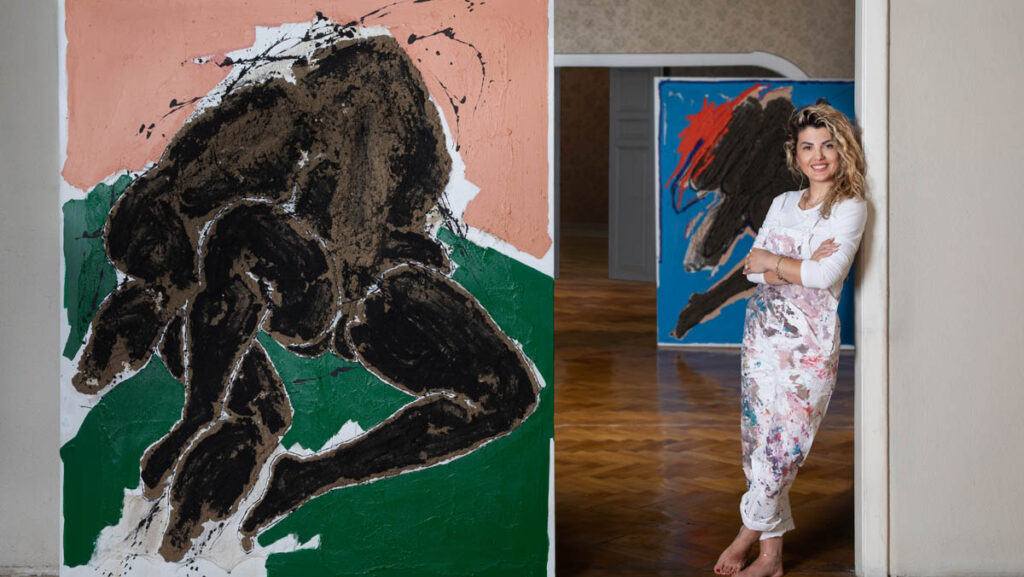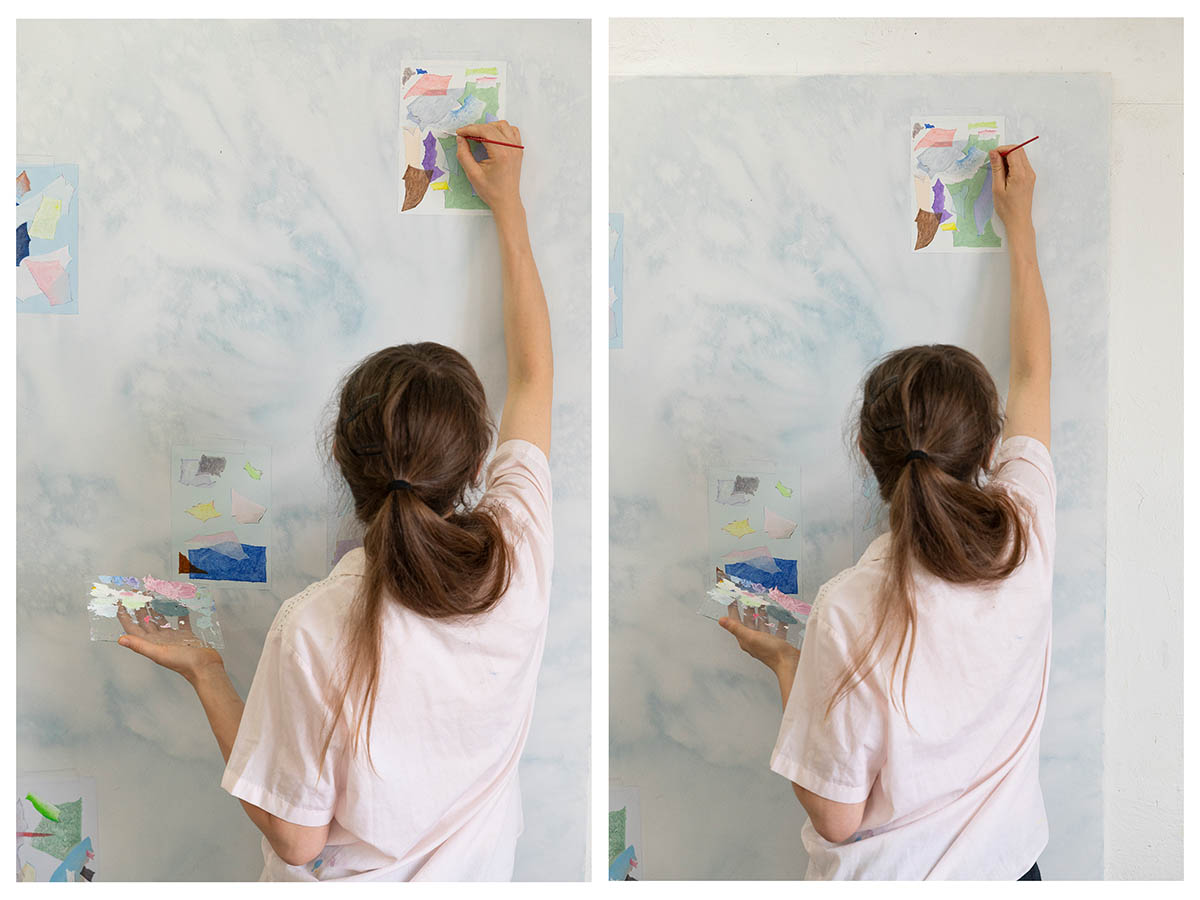
Was sind die wichtigsten Inspirationsquellen und wie beeinflussen sie Deine Arbeit?
Ich schaue zurzeit gerne Filme über andere Künstler:innen und lese Monografien. Das Buch „Writings“ von Agnes Martin beispielsweise, in dem sie über ihr Leben als Künstlerin und ihre künstlerischen Prozesse schreibt oder der Film über Daniel Richter, in dem er im Atelier bei der Arbeit gefilmt und interviewt wird und Tal R. über ihn und seine Arbeit spricht. Beide empfinde ich als gegensätzlich und gleichzeitig finde ich interessant, wie andere Künstler:innen ihre Bildsprache entwickeln und zu ihren bekannten Ergebnissen kommen.
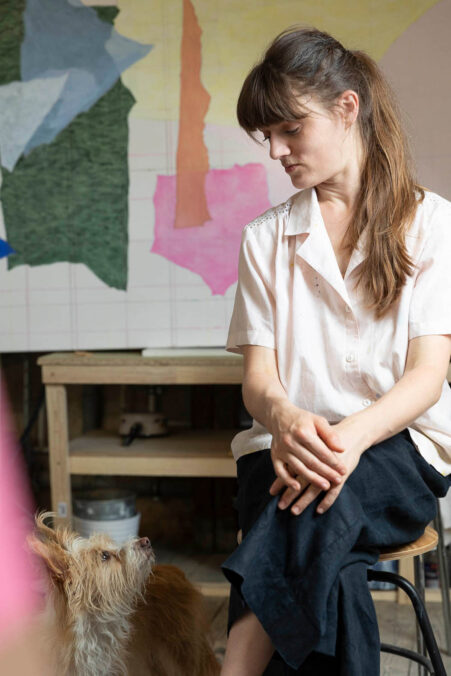
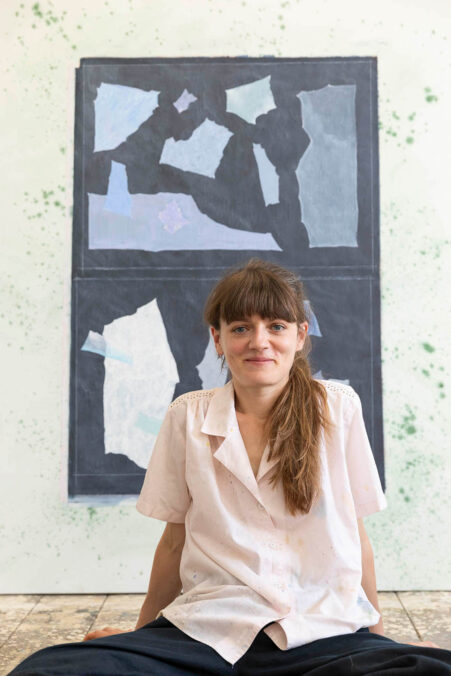
Wie beginnst Du deine Arbeit?
Am Anfang stehen formale Überlegungen. Häufig starte ich mit Collagen und entwickle dort durch das Reißen von Papier die Formsprache und Bildkomposition. Dazu entstehen parallel Aquarelle, bei denen ich Farbkombinationen austeste, mit Rastern und freieren Formgebungen arbeite. Diese Versatzstücke fließen schließlich alle in die Malerei ein.
Seit meiner Arbeit mit der Lithografie 2020 hat sich meine Herangehensweise an die Malerei stark verändert. Mich interessieren vermehrt künstlerische Positionen, die es schaffen, mit wenigen Mitteln Atmosphäre und Tiefe zu erzeugen und trotzdem nicht oberflächlich und dekorativ werden. Inspiration finde ich aber auch in der Auseinandersetzung mit psychologischen Theorien und Texten zu Zen und Mediation. Ähnlich wie in den Texten von Agnes Martin geht es mir um die Frage, wie ich an ein Bild herangehe, was ein Bild sein kann und wie ich Formen und Farbstimmungen entwickle und in Verbindung bringe. Anlässe zu neuen Serien können aber auch neue Materialien wie eine besondere Papierart, ein Farbmittel oder ein Muster wie beispielsweise neulich auf einem alten Stofftaschentuch sein.
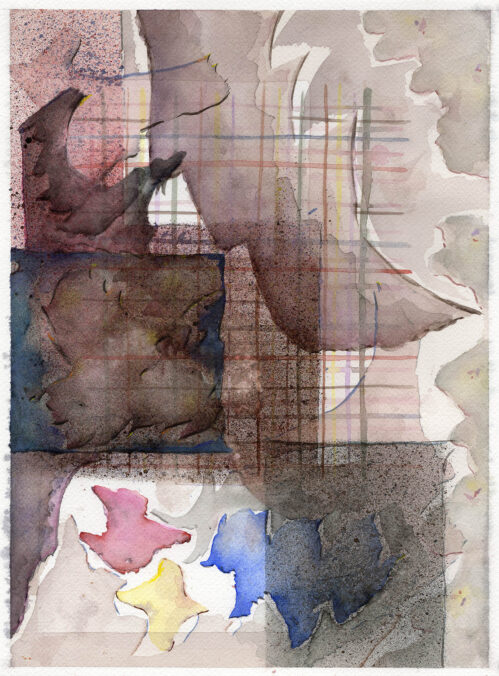
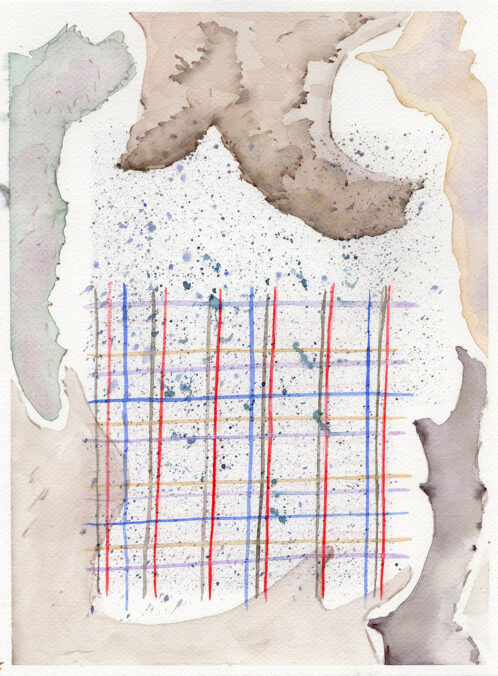
Wie entstehen deine Arbeiten?
Sind die formalen Entscheidungen getroffen, schaue ich im Prozess, wie sich die Serie und die einzelne Arbeit entwickelt. Beim Arbeiten versuche ich dann so wenig wie möglich zu korrigieren, Weißstellen und Grundierungen schon für das Endergebnis einzuplanen und Farbe und Form im einzelnen Bild so zu anzulegen, dass es sowohl im Einzelbild als auch in der Serie funktioniert. Falls eine Collage zur Vorlage für eine Malerei dient, wie das bei den neuesten Arbeiten der Fall ist, findet schon bei der Übertragung auf die Leinwand eine Veränderung statt, auf die ich dann wiederum reagiere.
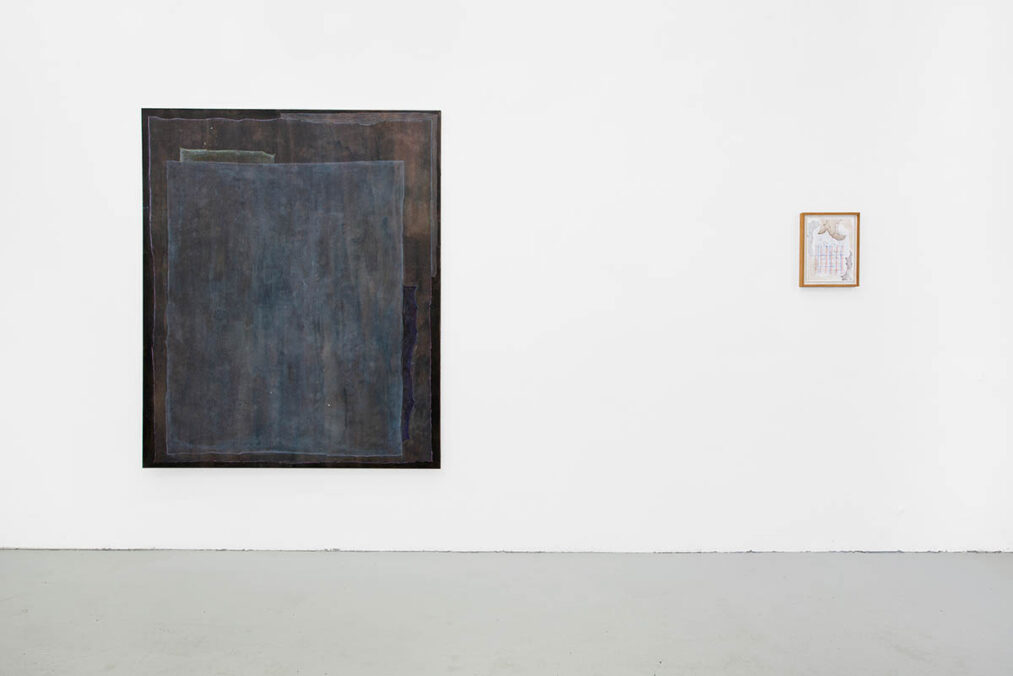
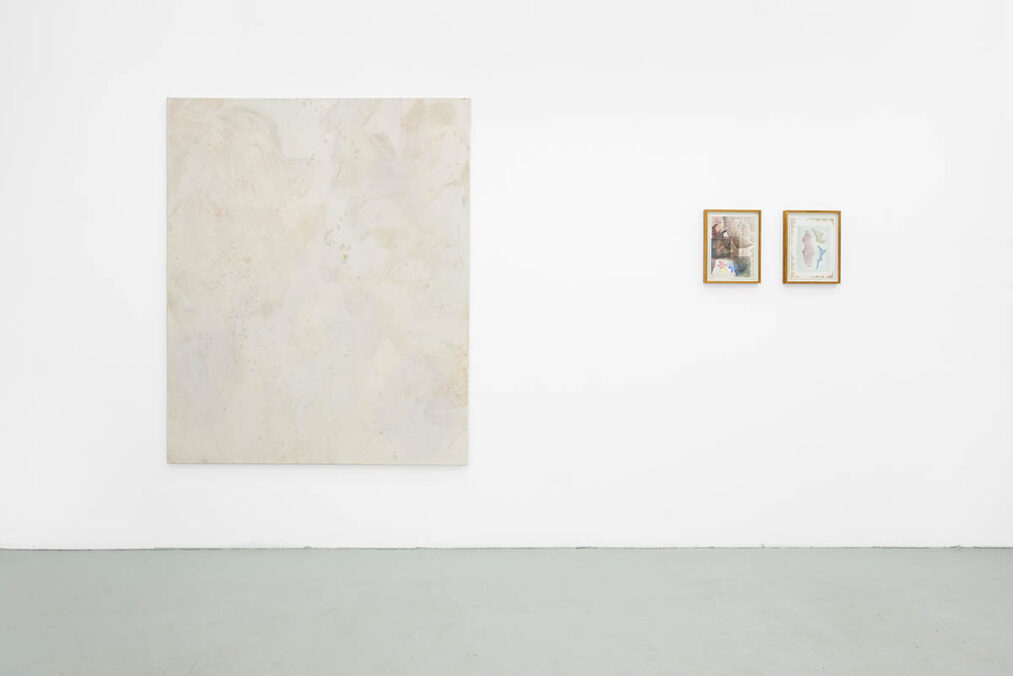
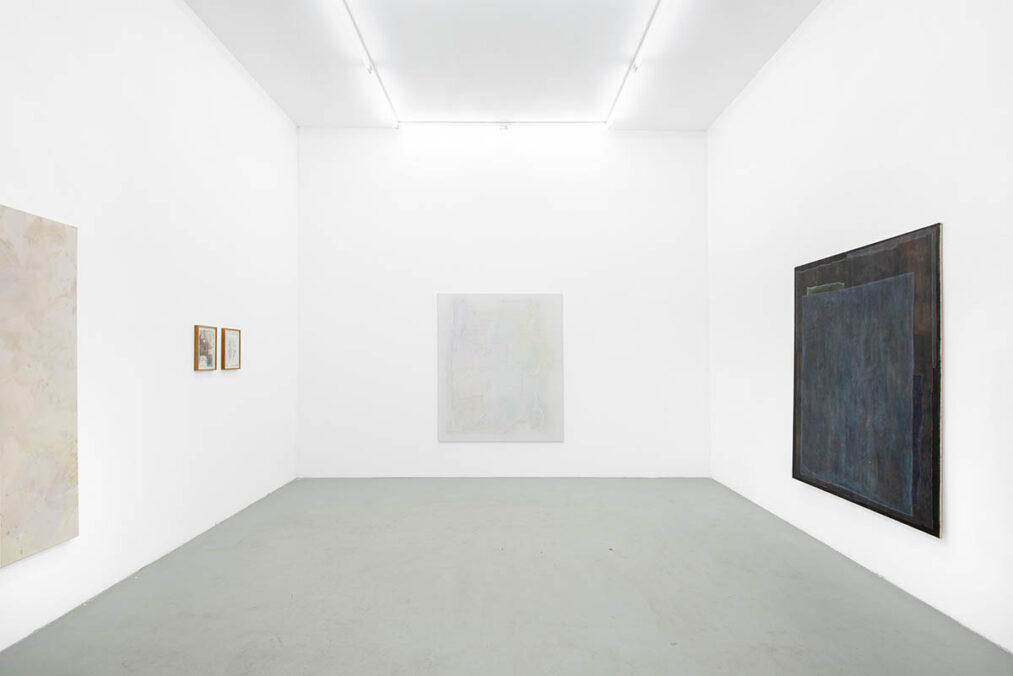
Die Farbaufträge und Strukturen ergeben sich beim Malen immer in Reaktion auf gerade Entstandenes. Nur in den seltensten Fällen tausche ich Farbtöne aus oder verändere die Formen. Viele Flächen bekommen ihre Farbigkeit erst durch ihre bunten Outlines und kleinen Farbkleckse, die teilweise auch ungewollt im Bild Platz finden. Gegen Ende der Serien werden die Farbkombinationen und Oberflächenstrukturen für mich dann immer schwieriger, weil jedes einzelne Bild für mich funktionieren soll, ich aber auch eine schlüssige und abwechslungsreiche Serie erarbeiten will. Für Ausstellungen kombiniere ich die Serien untereinander und entwickle ein neues Gesamtbild.
Welche Rolle spielen Texte in deinen Arbeiten?
Eigentlich eine Untergeordnete. Titel von Arbeiten findet man bei mir auch eher selten, weil ich den Arbeiten damit gefühlt zu viel Spielraum nehme. Anders war das bei meinem Buchprojekt „Tell me something good“, welches ich dieses Jahr mit dem Lubok Verlag und Nina Heller veröffentlicht habe. Hier habe ich in Zusammenarbeit mit Studio Cabrio aus Stuttgart, das erste Mal Text und Bild vereint. Nina hat dafür passend zu meinen Lithografien Kurzgeschichten entwickelt, die auf den tagebuchartigen Charakter eingehen. Durch die Gegenüberstellung von Text und Bild ist eine ganz neue Erzählebene geschaffen worden.
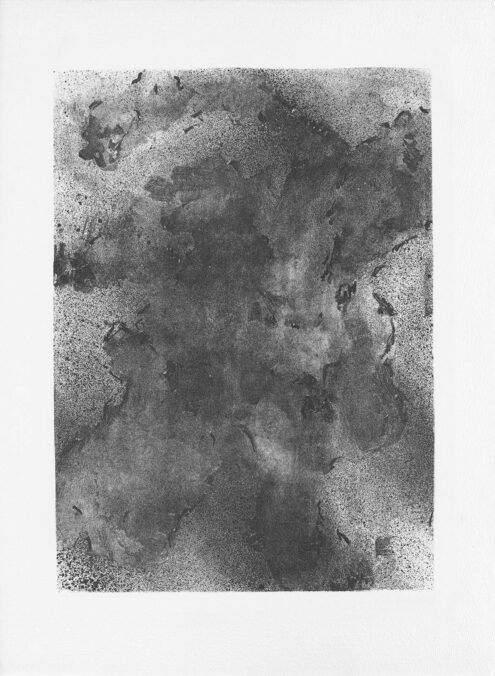
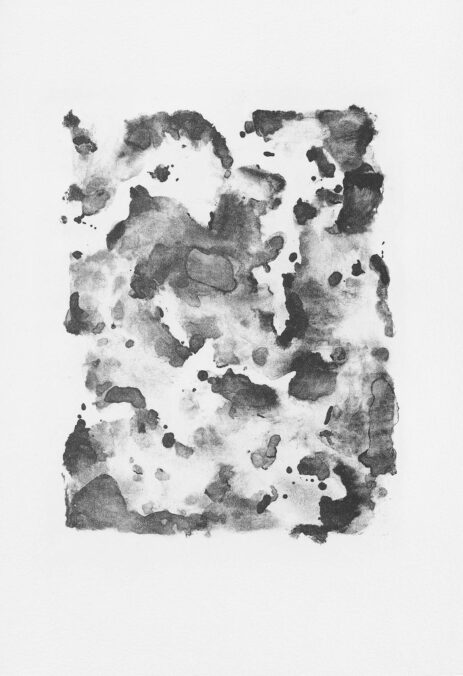
Wie wichtig ist für dich die Zusammenarbeit oder der Austausch mit anderen Künstler:innen?
Beides finde ich enorm wichtig. Glücklicherweise ist es heute ja auch relativ einfach mit anderen Künstler:innen in Kontakt zu sein, die man vielleicht noch gar nicht persönlich kennengelernt hat oder, die weit weg wohnen und deren Arbeiten man nur selten live sehen kann. Aber auch der Austausch auf Ausstellungsbesuchen und bei Studio Visits gibt mir immer viel Input. Zu sehen wie sich Kolleg:innen weiterentwickeln, an welchen Themen sie gerade arbeiten und zu welchen Lösungen und Ergebnisse sie gelangen, bringt mich in meiner eigenen Arbeit und Reflexion häufig auch auf neue Ansätze und machen mir Lust auf Neues oder bestärken den eigenen Ansatz. Gleiches gilt beim Zusammenarbeiten mit anderen Künstler:innen. Es macht mir einfach Spaß, wenn jeder seine Stärken und Ideen einbringt und dabei etwas entsteht, das man alleine so gar nicht hinbekommen hätte. Bei dem Buchprojekt war das für mich das erste Mal so richtig deutlich zu spüren. Vom Grafikstudio, über den Text, Druck und Verlag brachte jeder seinen Teil ein und am Ende entstand etwas dabei, was ich selbst so nie alleine hätte umsetzen können. Das hat Lust auf mehr gemacht.
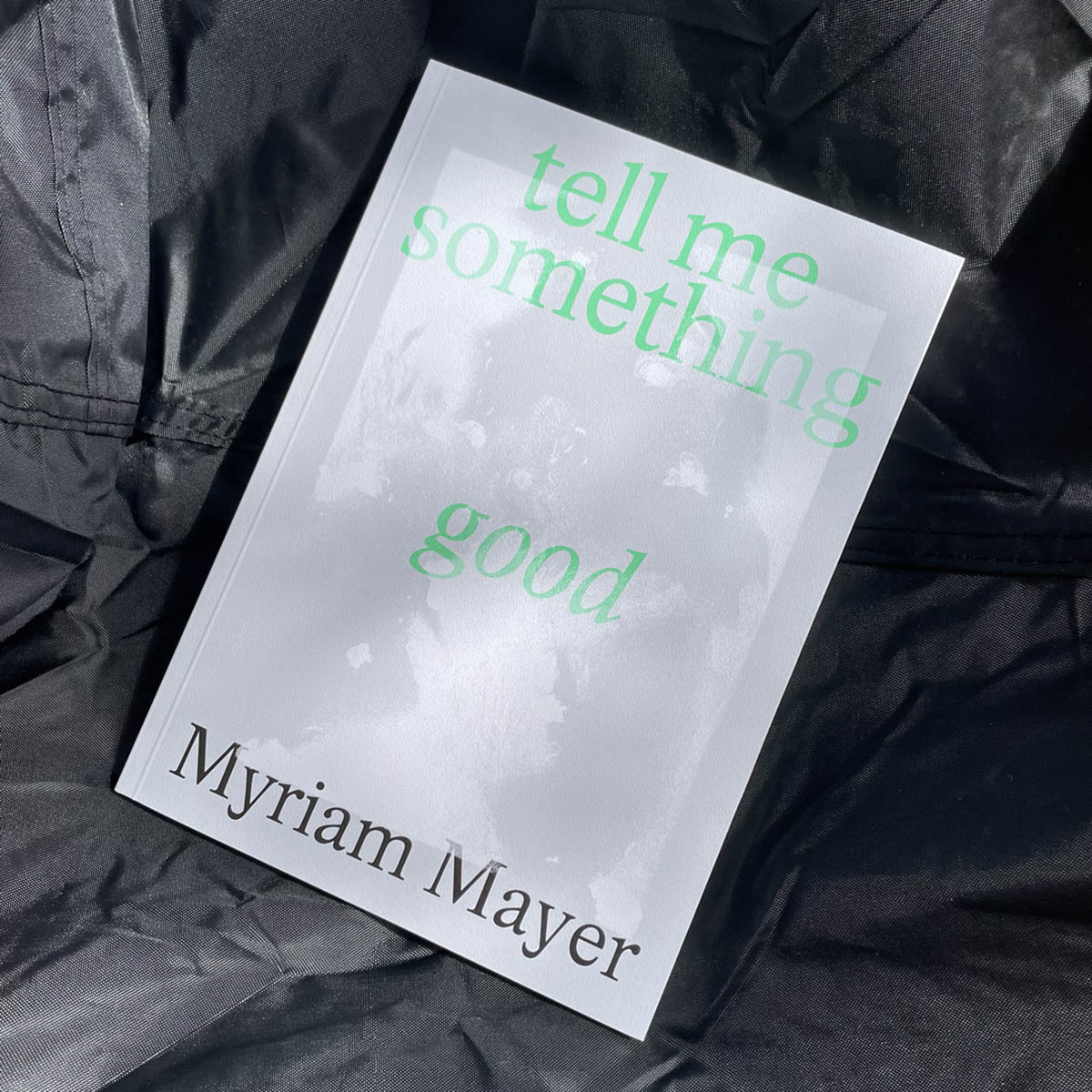
Wie sind deine nächsten Pläne?
Gerade bin ich am Ende von zwei Serien auf Leinwand und Papier angelangt, welche Teil von einer Gruppenausstellung in Stuttgart im Kunstraum34 sein werden. Außerdem kuratiere ich zusammen mit Lars Rasmussen gerade eine Ausstellung im Offspace Porte in Leipzig, zu dem wir Künstler:innen aus Halle einladen, die dort die Galaxie neuer Künste betreiben. 2024 werde ich eine Einzelausstellung im Atelier Transluzent in Stuttgart realisieren, zu der mich Thora Gerstner eingeladen hat.
Myriam Mayer – www.myriammayer.net, www.instagram.com/mayermyriamm/
Myriam Mayer uses a conscious limitation in format, material, and color as the starting point for her paintings, simultaneously articulating the content of the pictures. In the painting process, each picture element is set in concrete terms and nothing is corrected. Through the serial work, subtle structures become visible that anchor themselves in the viewer’s consciousness through their repetition.
What are your main sources of inspiration and how do they influence your work?
At the moment, I enjoy watching films about other artists and reading monographs. For example, the book „Writings“ by Agnes Martin, in which she writes about her life as an artist and her artistic processes. Or the film about Daniel Richter, in which he is filmed and interviewed working at his studio. And Tal R. talks about him and his work. I find both to be opposites and at the same time, I find it interesting how other artists develop their visual language and come to their well-known results. Since my work with lithography in 2020, my approach to painting has changed a lot. I am increasingly more interested in artistic positions that manage to create atmosphere and depth by few means and still manage to avoid becoming superficial and decorative. But I also find inspiration in discussing psychological theories and texts on Zen and mediation. Similar to the texts of Agnes Martin, I am concerned with the question of how I approach a picture, what a picture can be, and how I develop and connect forms and the moods of the colors. Inspirations for a new series could also be new materials such as a special type of paper, a new color medium, or even a pattern like the one I saw the other day on an old cloth handkerchief.
How do you start your work?
The formal considerations come first. I often start with collages and develop the formal language and image composition using pieces of paper which I tear by hand. Alongside this, I start using watercolors to test out different color combinations and working with shapes. These set pieces in the end all finally flow into the painting.
How do your works develop?
Once the formal decisions are made, I take a look at the process and see how the series and the individual works are developing. As I do this, I try to correct as little as possible; I try to plan for the whites and primers in the final result and to lay out the color and form of the individual paintings so that they work both as a single image and as part of a series. If a collage serves as a model for a painting, as is the case with the latest works, there’s already a change that takes place in transferring to the canvas – to which I then react in turn.
The application and structuring of color always arise in the painting as a response to what has just emerged. Only in the rarest cases do I go back to exchange color tones or change the forms. Many areas get their colorfulness only through their colorful outlines and colorful splotches, which also sometimes unintentionally find their way into the picture. Towards the end of the series, the color combinations and surface structures start to become more and more difficult for me, because each picture needs to work, but I also want the series to be coherent and varied. For exhibitions, I even combine series and develop a new overall scene.
What role do texts play in your work?
Not a prominent one. There are rarely titles with my works, because I feel that they take too much leeway from the work itself. It was different from my book project Tell Me Something Good, which I published this year with Lubok Verlag and Nina Heller. Here, in collaboration with Studio Cabrio from Stuttgart, I have text and image combined for the first time. Nina developed short stories to match my lithographs, which lends itself to the diary-like character of the book. Through this juxtaposition of text and image, the book arrives at a whole new level of narrative, for me.
How important is collaboration or exchange with other artists for you?
I find them both incredibly important. Fortunately for today, it’s relatively easy to be in contact with other artists who you might not have met personally or who live far away and whose work you can rarely see live. But also making exchanges during exhibition visits and studio visits always gives me a lot of input. Seeing how colleagues develop things, what topics they’re currently working on, and what solutions and results they come up with; often gives me a new outlook into my work and reflection and makes me want to try something new or bolster my techniques.
The same is true when working with other artists. I get a lot of joy from seeing everyone contribute their strengths and ideas and seeing something emerge that no one would have been able to achieve on their own. The book project was the first time I felt this. From the graphics studio to the text, printing, and publishing, everyone contributed their part and in the end, something was created that I would never have been able to realize by myself. That made me want to do more.
What are your next plans?
I just finished two series on canvas and paper, which will be part of a group exhibition in Stuttgart at Kunstraum34. I am also curating an exhibition with Lars Rasmussen at Offspace Porte in Leipzig, where we are inviting artists from Halle who run the Galaxie neuer Künste. In 2024, I’ll put on a solo exhibition at Atelier Transluzent in Stuttgart, to which Thora Gerstner has invited me.
Myriam Mayer – www.myriammayer.net, www.instagram.com/mayermyriamm/




